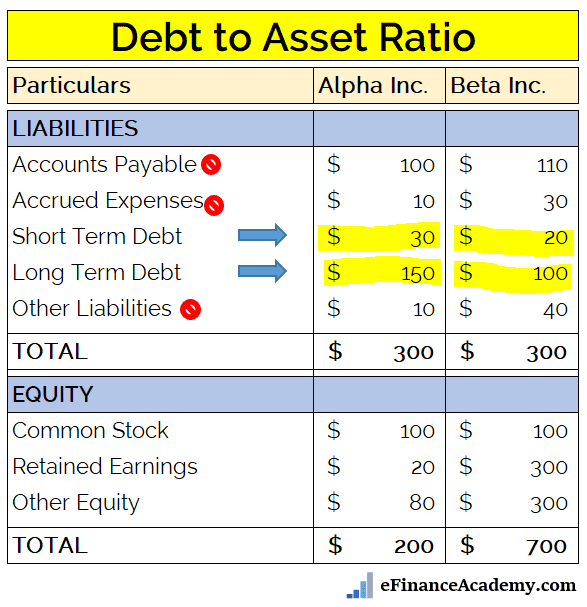What is safety stock? Definition, Importance, Formula
For some retailers, a safety stock calculation can simply be a gut-feeling, an educated guess at what they think is right. However, this isn’t recommended as it can cause issues with stock outs causing customer frustration and lost sales. Keep in mind this method of safety stock calculation, and the safety stock formula aren’t catch-alls for ensuring you’ll never run out of stock. A higher service level demands a higher safety stock and while it would be lovely for the inventory manager to hold enough safety stock to cover 99% of all situations it is rarely economically viable to do so. This safety stock calculation is a very simple formula, and you must also track and calculate for changing conditions.
- In this article, we’ll talk about safety stock and how you can use the safety stock formula to calculate the perfect stock levels for your business.
- So, a company selling 200 items per day that wants seven days’ worth of safety stock would multiply 200 by seven, meaning it needs a safety stock of 1,400 units.
- The service level factor means deciding on the correct service level for a certain product by balancing inventory costs vs the cost of stock out.
- Here’s a quick recap of the reorder point formula, but expanded to show calculating safety stock as a percentage of lead time demand.
- But it doesn’t take into account stock which is still in production and not yet ready for sale.
- Knowing how much cash is tied up in safety stock can give you peace of mind, but how much of your cash flow is in raw materials or products that you’ve procured but haven’t received yet?
You might not need to switch supplier if you bake this inconsistency into your safety stock. For example, let’s say that the item has a lead time of 10 days from https://kelleysbookkeeping.com/vintage-yellow-accounting-practice-forms/ the supplier but on occasion it has been up to 15 days. Getting the right safety stock formula can be the basis for an effective inventory management system.
Safety stock and the reorder point formula
The normal distribution method is applicable when taking into account service level only. Firstly, safety stock calculations are not intended to eliminate all stock outs —just the majority of them. Minimum stock is the minimum number of units of a SKU that a business should have on hand in its regular stock to meet customer demand. At this point, the business should be submitting a purchase order to the manufacturer so more inventory arrives in time without the chance of a stockout. If your initial demand forecasts are off, you risk not having enough inventory to meet customer demand.

Before you choose the right formula for your safety stock you must first consider the quality and quantity of your data. As data is a critical element in all of these calculations, a solid and reliable data set to work from is critical. If not, your calculations could be inaccurate causing more issues than it solves.
What is pipeline stock?
Safety stock calculations allow managers to choose their level of risk and exposure to poor services levels and weigh them up against inventory costs. Now more than ever there is a need to ensure that safety stock levels are in place to try and limit the impacts of these disruptions. The percentage of inventory that should be safety stock will vary from business to business. For most businesses, about 50% of the average amount of inventory you use during your reorder lead time is a sufficient amount of safety stock. Get a free quote from ShipBob for real-time inventory management, the tools to forecast demand and automatically calculate reorder points for each SKU, and the best ecommerce fulfillment services. Establishing omnichannel visibility across order and inventory channels is crucial to prevent overselling.

Spending time determining safety stock requirements will not only save you money, but it will also increase your efficiency on the shop floor and your storage space. On the other hand, a product like desk fans is much more difficult to forecast. Generally you might sell more in the summer months, but how can you plan for a heatwave when demand is unexpectedly high? To cover an uncertainty like this you require much more safety stock of desk fans than you do for razor blades. Every retailer and manufacturer will have products that sell well all year round and products that fluctuate in demand. For example, products like razor blades are bought year round which makes it easier to define reorder quantities.
What is the difference between buffer stock and safety stock?
But not everything in business is predictable, and there can be delays in the retail supply chain. As another example, a bicycle manufacturer was recently featured in a popular biking magazine and experienced a sharp uptick in orders. As the manufacturer fulfills orders, inventory is depleted faster than the average lead time, increasing the risk of a complete stockout.
- Some business owners overcompensate with too much inventory because they never want to miss out on a sale or have production downtime.
- Much of inventory management is approached from a cost of stock point of view and is designed to keep stock at the minimum level required to satisfy the customer.
- Typically, businesses do their best to predict future sales and then manage inventoryand inventory costs according to that prediction.
- But crucially they often then fail to replace the calculation – largely relying on ‘gut feeling’ to set the level.
- In this way, safety stock allows the business to keep making sales and bringing in revenue while waiting on more inventory from their manufacturer, all without ever stocking out.
Your business won’t always run like clockwork, and it can be difficult to stay on top of your numbers. Some inventory management softwares include automatic reorder notifications that How To Calculate Safety Stock? Safety Stock Formula And Calculation alert you when a SKU has hit its reorder point of your choosing. If the reorder point was calculated correctly, these automatic reminders enable you to time replenishment perfectly.
Normal Distribution
There are several reasons businesses should have safety stock on hand, and it can quickly prove its value when the unexpected strikes. Running low on stock is an inevitability, but it doesn’t have to disrupt business. Learning how to calculate safety stock and keeping adequate amounts on hand ensures that the supply chain runs smoothly despite stocking delays and temporary outages. However, there are some essential guidelines that operational decision-makers need to understand to optimize safety stock in a way that supports overall business objectives. Revenue lost from stockouts is often coupled with the loss of customers who find the items elsewhere and often never return to the business. Before you can finally determine safety stock, you must consider Z or the service level.
How do you calculate safety stock carrying cost?
To determine inventory carrying costs, first add up the expenses outlined above—capital, storage, labor, transportation, insurance, taxes, administrative, depreciation, obsolescence, shrinkage—over one year. Then divide those carrying costs by total inventory value and multiply the number by 100 for a percentage.
To find the difference between the expected lead time and the actual lead time to find the standard deviation. As a business owner, one of your biggest nightmares is missing out on sales because of stockouts. Not only does this cut into potential revenue, but it can also sever ties with loyal customers you’ve worked hard to build relationships with. That person is now either going to buy from a competitor or not buy at all. The Z score, also called the desired service factor, is a way to decide how confident you want to be about having enough stock.
What is safety stock?
If you use multiple warehousing locations to store inventory, optimize levels of stock based on the expected demand per location. This is the number you would likely order on a typical purchase order since it’s what you need to replenish stock with average customer demand. As before, “Z” represents the desired service level and “σLT” represents the lead time deviation (see the standard deviation formula for more information on how to calculate those). This formula is best suited for short lead times, as it doesn’t take long-lead-time variables into account. It calculates the average maximum number of units that are needed at any given time. Excellent inventory management requires coordinating cycle stock and safety stock to ensure that inventory levels stay in line with demand and supply, making inventory management straightforward and more consistent.
- When using a safety stock inventory formula, curating a formula that best fits your industry and the different factors involved is essential.
- This method considers how many products you sell per day and the number of days’ worth of stock you want to hold at one time.
- When your inventory is well-stocked and flowing, customers are happy, revenue is coming in and your business is growing.
- This timeframe is based on gut feeling and doesn’t account for product lead time.
- They determine the amount of safety stock to keep from the maximum daily usage for over a period of time, but without using a particular formula.
Like many other kinds of business decisions, there is no one-size-fits-all formula that will work for all businesses, so choose the method that works the best for your business. Greasley’s formula takes both lead time and demand fluctuations into account, which provides a more accurate way of calculating safety stock. But it doesn’t take into account stock which is still in production and not yet ready for sale.

